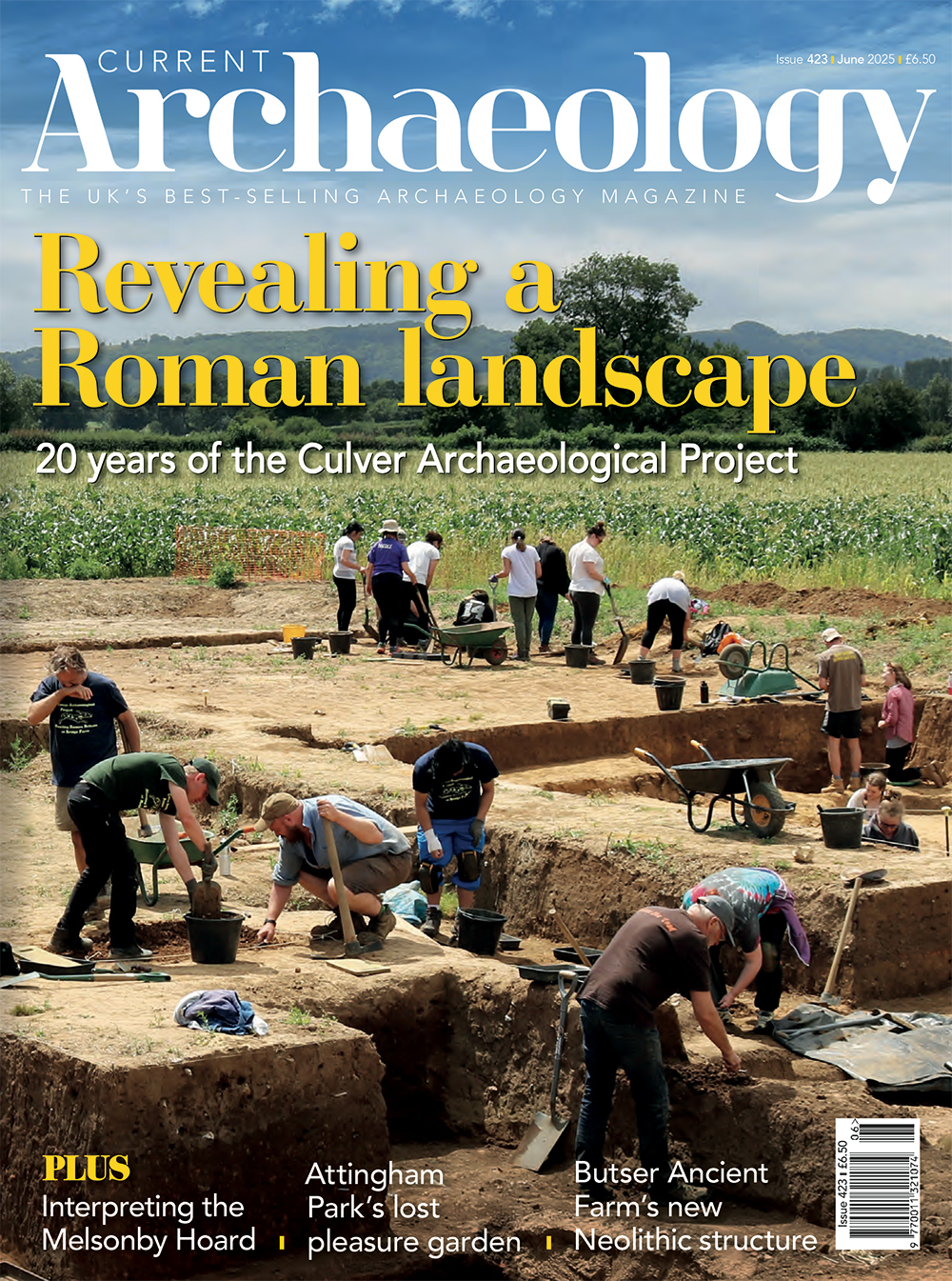Founded in 2005, the Culver Archaeological Project has for the last two decades been uncovering a fascinating Roman landscape – including an unusual enclosed settlement – beside the River Ouse in East Sussex. With the initiative now marking its 20th anniversary, we explore some of its key findings to-date in this month’s cover feature.
Turning from a long-running excavation to a newly announced discovery, we then share the latest insights into the magnificent Melsonby Hoard, one of the largest Iron Age hoards found in the UK. Research into its hundreds of components has only just begun, but this collection – discovered half a mile from the Iron Age stronghold at Stanwick – is already shedding vivid new light on this period of Yorkshire’s past, and the wealth of some of its inhabitants. Meanwhile, echoes of rather more recent elite activity have emerged at Attingham Park, a grand country residence and National Trust property in Shropshire. There, excavations have uncovered the remains of a long-forgotten ornamental garden dating to the early 19th century.
Also originating in the 19th century, but rather more functional in design, are the gasholders that were once unmistakable industrial features of every town. Today, only around 600 examples survive; our penultimate feature traces the history of these striking structures, and the new uses that they are finding now.
Finally, we highlight a building that combines both ancient and modern themes: Butser Ancient Farm’s latest archaeological reconstruction, which depicts a late Neolithic house that was originally excavated at Wyke Down in Dorset almost 30 years ago.

